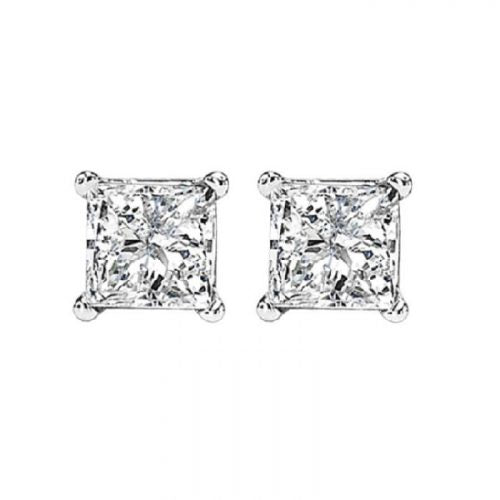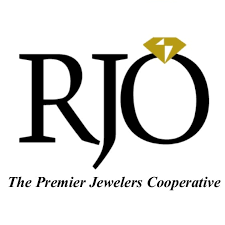Diamond Studs Shopping 101
Diamond studs are the ultimate accessory. They’re gorgeous, timeless, and they pair beautifully with any ensemble, including everything from jeans and a t-shirt to a ball gown. A pair of diamond stud earrings is an invaluable asset to have in your jewelry collection— but how do you know which pair is the perfect pair for you?
Diamond studs are simple, yet come in so many different styles. To help you decide which style of stud is right for you, we’ve put together this diamond studs shopping guide. First, we’ll give you a brief history of diamond studs. Then, we’ll guide you through how to choose your diamond shape, diamond quality, precious metal, and setting style.
A Note on the History of Diamond Studs
Diamond studs as we know them today have been popular since the end of the 19th century. They then experienced a massive surge in popularity in the 1970s, when they became a staple item in jewelry boxes around the world.
People have adorned themselves with diamond earrings for thousands of years. Earrings are one of the most ancient accessories and stud earrings have been in existence since at least the time of ancient Egypt, when they were popular among royals and citizens alike.
Today, you can’t look pictures of a red carpet event without seeing diamond studs on the ears of numerous celebrities. Diamond studs are an incredibly popular choice for black tie events, yet they’re also often worn as a part of a casual look or with work attire.
Best Shape and Cut For Studs

Now, onto the stud shopping guide! When you shop for a pair of diamond stud earrings, we often recommend choosing your desired diamond shape first, as diamond shape tends to define the overall style of this piece of jewelry.
The most popular shapes are princess cut and round cut diamond studs. Round cut diamonds are popular for their high brilliance and classic, traditional look. Princess cut diamonds are popular for their high sparkle and scintillation, as well as for their edgier, more contemporary look.
Though round diamonds and princess cut diamonds are the most popular shapes for diamond studs, they are not the only options. There also a number of unique fancy shaped diamonds that can give your pair of studs a more eye-catching look. Cushion cut diamonds and oval shaped diamonds have been rising in popularity thanks to their vintage-style beauty and soft, rounded lines. Emerald cut and asscher cut diamond are also popular for their vintage look, though these cuts are more angular and bold. Then, there are diamond gemstone shapes that are highly unique, like pear shaped, marquise cut, and heart shaped diamonds, which are perfect for those who want to stand out from the crowd.
The 4Cs and Buying Diamond Studs

Let’s talk about the 4Cs and buying diamond earrings. The Four Cs of diamonds are color, clarity, cut, and carat. When you shop for a diamond, you can look at its 4Cs to get a better understanding of its quality, which can affect how beautiful it is to you. You can find a diamond’s 4Cs on its grading report, which is given by a certified diamond grading organization such as the GIA.
Most people are less concerned about getting extremely high quality diamonds for diamond studs than they would be for something like an engagement ring. This is because studs are generally viewed from a distance, which makes flaws less noticeable, and there is less pressure for studs to be “perfect.” When buying any diamond, quality is important, as quality can affect beauty. Yet, most people relax their standards slightly when buying diamonds in stud earrings in order to maximize their budget and get studs that are a bit larger.
Color and Diamond Studs
Diamond color is a measurement of how colorless a white diamond is. Diamond color is graded on a scale of D to Z, where D is colorless and Z is noticeably yellow.
Diamond color is always a personal preference. Often, jewelers recommend G or H color diamonds for engagement rings and other diamond rings, since they are near colorless and are much more affordable than D to F color diamonds. However, you may find that you’re happy going lower than G or H color for diamond studs, since a tinge of color is less noticeable on studs that will also be reflecting the color of your skin and hair when worn.
Clarity and Diamond Studs
Clarity is a measurement of how flawless a diamond is. Diamonds with more inclusions (internal flaws) or blemishes (external flaws) will rank lower on the diamond clarity scale.
Many experts consider clarity rather low on the priority list for diamond studs. As we’ve mentioned, studs are usually seen from far away, which will make it much harder to spot any flaws. If you’d like to maximize your budget, you may be happy going with diamonds on the lower end of the clarity scale (Slightly Included or Included). However, if the clarity is important to you, you may still want to go with eye-clean diamonds (this means that no flaws can be seen with the naked eye) that are Very Slightly Included or above.
Cut and Diamond Studs
Diamond cut, which is not to be confused with diamond shape, is a measurement of how well a diamond was cut. Cut is very important for the sparkle of a diamond. If a diamond is well cut, it will capture and emit maximum light, which gives it beautiful brilliance. If a diamond is poorly cut, it will lose light, making it look dull and dim.
Experts recommend prioritizing diamond cut in general, including when purchasing diamond studs. The fact that diamond studs are viewed from farther away actually makes diamond cut even more important. With studs, you will want your diamonds to “pop” with sparkle, even from a distance. For the most brilliant studs, we recommend going with a cut grade of Very Good or Excellent.
Carat and Diamond Studs
Carat is a weight measurement that can give you an idea of how large a diamond is. When you buy diamond studs, you’ll usually see their carat weight listed as “ctw,” which stands for “carat total weight.” This means that the carat weight listed for the studs is for the total carat weight of the studs. For example, 1.00 ctw diamond studs will have two diamonds that are each 0.50 carats in weight.
Most people buy the highest carat diamonds they can afford within their budget. If you care more about diamond size than diamond quality, you may want to consider loosening your standards for clarity and color in order to maximize your carat weight. However, if you are highly concerned with how big your studs will look, you will probably not want to scrimp on cut grade. Diamonds that have less brilliance due to a poor quality cut tend to look smaller than they actually are.
Choosing Your Precious Metal

Stud earring settings are usually crafted from one of four precious metals: yellow gold, white gold, rose gold, and platinum. When choosing your precious metal, you’ll want to consider each metal’s style. Gold has a classic, traditional look. Rose gold is very romantic and has a vintage-look. White gold and platinum have a similar look: they are both icy white and quite sophisticated.
While white gold and platinum are similar in style, they differ in durability, weight, and price. Platinum is more durable than gold, making it less prone to scratching or denting. Though platinum has a durability advantage over white gold, it is heavier and more expensive. Unless you’re looking at studs with very large settings, the weight difference between platinum and white gold is unlikely to be an issue. However, many find the price difference significant. If you want a white precious metal but want the best value, you may want to go with white gold. Or, if you care more about durability and don’t mind paying a bit more, you may want to go with platinum.
A Note on Metal Allergies:
It’s important to know that 18k or 14k yellow gold, rose gold, and white gold are all gold alloys. This means that they are made of both gold and another metal, such as nickel or copper, which can be a concern for those with metal allergies. If you have an allergy or sensitivity to nickel or copper, choose platinum for your diamond studs. The platinum used in jewelry is pure platinum, which makes it hypoallergenic.
Choosing Your Setting Style

Stud settings come in many different styles. Most commonly, you’ll see prong settings, bezel settings, and halo settings used for diamond stud earrings. Let’s go over the advantages of each of these setting styles.
Prong Settings
Prong settings consist of slim lines of metal that hold your diamonds in place. Prong settings can have any number of prongs but, most commonly, you’ll see four prong, three prong, and six prong settings. (Note: Three prong settings are also often called “martini” settings.)
Prong settings have a classic, solitaire setting look— they’re what most people think of when they picture diamond studs. Prong settings also come with a major advantage: light entry. Prong settings allow the sides of your diamonds to catch more light, which maximizes their brilliance.
Bezel Settings
Bezel settings hold diamonds in place with a ring of metal. This ring snugly fits around your diamonds, which keeps them securely in place. Additionally, bezel settings offer the most protection from bumps or drops. Bezel settings do usually allow for slightly less light entry than prong settings. However, many find that they prefer the sleek look and added protection of bezel settings.
Halo Settings
Halo settings offer high glamour. Halo settings consist of one or more rings of diamonds that surround the settings’ diamonds. These smaller accent diamonds add brilliance to your diamond earrings and they also affect your earrings’ visual impact. When viewed from a distance, as studs generally are, a halo setting will make its enclosed diamond appear larger than it actually is.
Earring Backs for Diamond Jewelry
Finally, let’s briefly discuss your earring back options. When you purchase any earring, it will come with earring backs that hold the earring in place on the wearer’s earlobe. The most common type of earring back is the friction back, which holds an earring in place with pressure. However, you may want to consider choosing a more secure type of earring back for your diamond studs, especially if you have invested in larger carat and/or higher quality diamonds. Some more secure earring back options for diamond studs include La Pousette backs, which lock into place, and screw backs, which screw into place.















